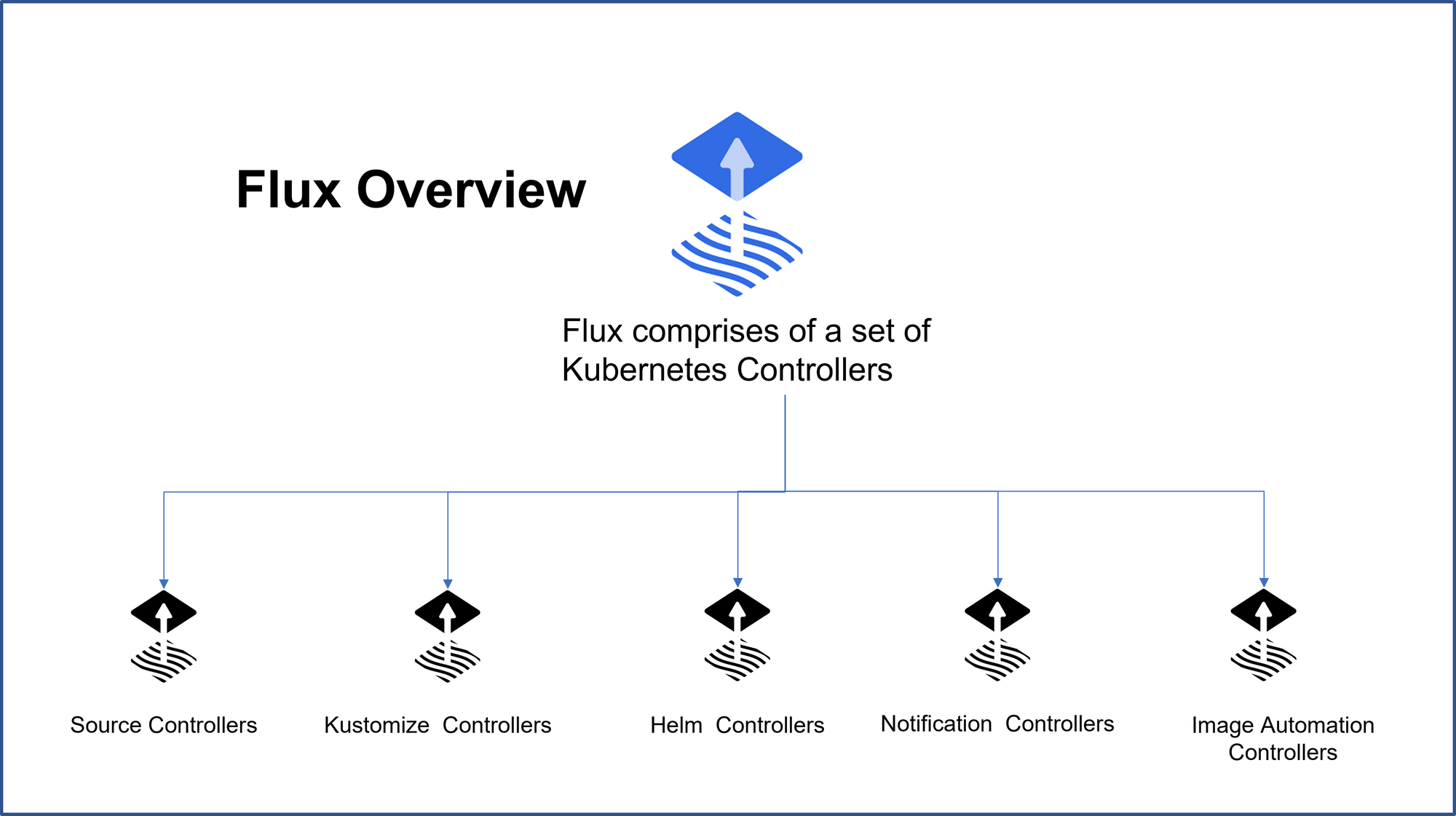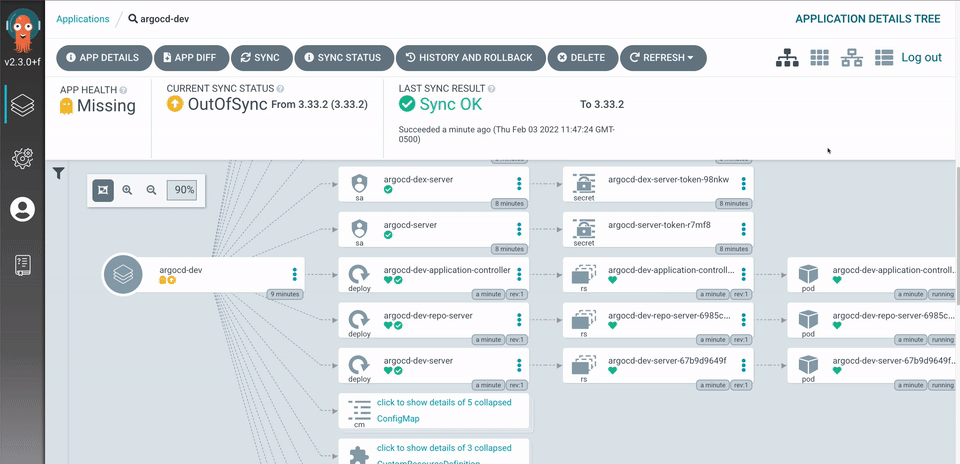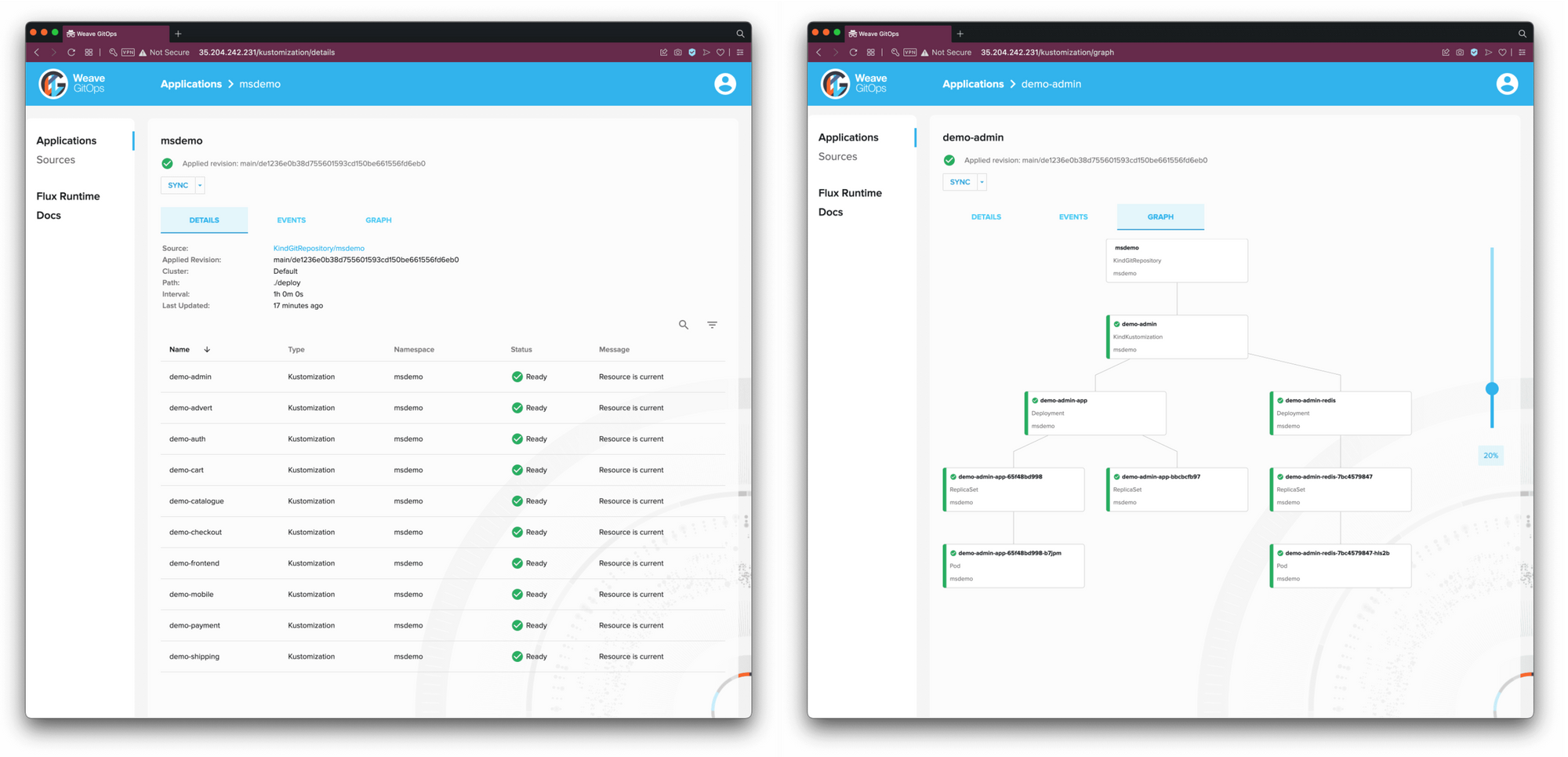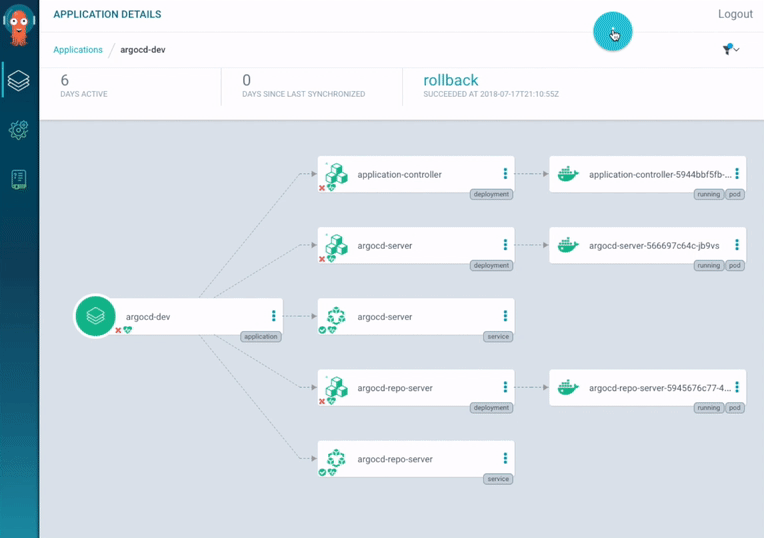Guide To Selecting the Right GitOps Tool - Argo CD or Flux CD
Flux CD and Argo CD have the same core functions and perform GitOps for Kubernetes-native deployments. They mainly differ on interface and application deployment.
Join the DZone community and get the full member experience.
Join For FreeKubernetes adoption is on the rise, which has proportionately increased the adoption of tools that perform deployments specifically into Kubernetes. But Kubernetes deployments are challenging if one relies on traditional deployment practices. It is complex and time-consuming, especially for large and complex applications. To simplify deployment into Kubernetes, developers prefer to use GitOps, a pull-based deployment mechanism. GitOps is made possible with tools like Argo CD and Flux CD, which can automate the deployment process into Kubernetes.
We will understand the difference and similarities between Argo CD and Flux CD on the concepts below:
- Installation
- Interface
- Application Deployment
- Deployment strategies
- Feedback notification
- Security
- Multi-tenancy
What Is Flux CD?
Flux CD is an open-source Continuous Delivery tool for automated Git-based Kubernetes deployments. It uses a declarative approach to manage Kubernetes deployments using Git repositories to store application configurations. It syncs the Kubernetes clusters with the Git configuration repository.

Flux CD also provides several other features, such as the ability to perform automated rollbacks and to integrate with Helm and Kustomize to provide a more flexible deployment process. It also allows users to perform deployment strategies like Canary and Blue-Green deployments.
Flux Architecture and Components
Flux comprises a set of Kubernetes controllers. Kubernetes controllers handle the lifecycle of objects in Kubernetes. Infrastructure and workload dependency is inbuilt, which lets you sequence your prerequisites before an application is deployed. For example, a database must be up and running before the application gets deployed to ensure the application works fine.

Source Controllers
Source controllers monitor a version-controlled repository like GitHub for detecting changes in the application’s source code and configuration. On detecting changes source controller initiates a deployment process to update the application's deployment manifests and apply the changes to the Kubernetes cluster. It can also trigger automated tests and perform security scans based on validation to ensure consistency and reliability.
Kustomize Controller
The Kustomize controller manages the deployment of Kubernetes resources using Kustomize. The Kustomize controller in Flux CD monitors the source repository for change and automatically applies the appropriate updates and code upgrades to the base manifests to get the desired configuration.
Helm Controller
In Flux CD, the Helm controller is a component that manages the deployment of Kubernetes resources using Helm, a package manager for Kubernetes. The Helm controller in Flux CD monitors a Helm chart repository for changes, detects changes, and automatically deploys the updated chart to the Kubernetes cluster. It can also roll back deployment to a previous version in case of errors or issues.
Notification Controller
In Flux CD, the Notification controller is a component that sends notifications based on events that occur within the Flux CD system. The Notification controller can send messages to various channels, such as Slack, email, or other messaging platforms, to inform team members about application deployment status changes.
Image Reflector Controller
In Flux CD, the Image Reflector controller is a component that automatically updates the Kubernetes manifests with the latest available container image from a registry. The Image Reflector controller monitors the specified container image registry for new photos and updates the Kubernetes manifests with the latest image tag.
Image Automation Controller
The Image Automation controller monitors a container image repository for new versions of images and automatically triggers the update of the application deployment manifests with the new image tag.
How Flux CD Works
As Flux also works on the concept of GitOps, it can automatically deploy the changes in the application found in the Git Repository to the respective Kubernetes clusters ensuring up-to-date applications.
- Developers and DevOps must update Kubernetes manifests and push them to the source Git Repository.
- The current configuration so=red in the memory cached pod is frequently synced with the repository using a Kubernetes operator for changes. The Flux container compares that with the pod's existing configuration in cached memory.
- Any mismatch detected will trigger a set of kubectl apply/delete commands to bring the cluster to the latest configuration.
- The latest configuration gets stored as cache data, which is continuously tracked for changes.
What Is Argo CD?
ArgoCD is a Continuous Delivery (CD) tool that has gained popularity in DevOps for performing application delivery onto Kubernetes. It relies on a deployment method known as GitOps. GitOps is a mechanism that can pull the latest code and application configuration from the last known Git commit version and deploy it directly into Kubernetes resources. The wide adoption and popularity are because ArgoCD helps developers manage infrastructure and applications lifecycle in one platform.
Read here to Understand the architecture and components of Argo CD.
Comparison of Flux CD With Argo CD
Both Argo CD and Flux CD are powerful tools for managing Kubernetes deployments. Let us analyze some key differences and similarities between Argo CD and Flux CD:
How To Differ in Installation
Flux and Argo must be installed on the Kubernetes cluster you want to manage. Here are the steps on how they differ in installation.
Argo CD Installation
Installation of Argo CD is relatively straightforward. Hands-on with CLI will be enough to keep Argo CD up and running.
The standard stores involved in installation are:
- Creation of a namespace `Argocd` and use of the `kubectl` command to apply the package downloaded from GitHub
- For a hardened CLI user, one need not install the UI and make Argo CD work with the essential components.
- As an external IP is not configured on the Argo CD API, the user has to configure one to access it from the outside.
- Setting up Ingress is necessary to perform advanced touring and rollback strategies.
- Argo CD wasn't designed to be run in an air-gapped environment, but there are ways to perform air-gapped installations. For Airgapping Argo CD, we have to use HELM charts.
Flux CD Installation
The Flux CD installation is similar to Argo CD and will be done on a CLI.
- Download the executable binaries from GitHub.
- Using the flux bootstrap command, a user can install Flux on a Kubernetes cluster and configure it to manage itself from a Git repository.
- For Air-Gapped installation of flux without access to the internet, Flux binaries and the container images need to be downloaded from a system with internet access. Unlike ArgoCD, Flux can run in an offline environment off the shelf.
How Do They Differ in Interface?
A web-based UI is necessary for most Developers and DevOps teams as business demands them to perform operations faster and with shorter learning curves. UI becomes a necessity when teams prefer low-code operations. Whereas a UI adds value to day-to-day operations, it is essential that the UI can provide end-to-end visibility of the system and the proper controls for a better user experience.
Argo CD Interface
Argo CD provides a web-based user interface that makes managing and monitoring your deployments easy. The GUI dashboard enables users to perform various tasks, from application onboarding to deployment into Kubernetes clusters, without accessing the CLI. Though limited capability for advanced troubleshooting and monitoring of Kubernetes resources, most jobs can be quickly done on Argo CD UI. All deployment-related information is available in a single dashboard, saving the users from logging in to each cluster separately to perform deployment operations.

If you are looking for a much more advanced dashboard for Kubernetes management where you can perform all Kubernetes applications lifecycle management without using the CLI or kubectl command, explore the Kubernetes dashboard by Devtron.
Flux CD Interface
Flux CD does not provide a user interface and requires you to use the command line interface to manage your deployments. So a user has to rely on the CLI command to manage the deployment lifecycle. This increases the learning curve of using the Flux CD, making Argo CD more popular among users.
There are some unofficial Flux web UI projects, but the projects are stuck, and it doesn't add any value to the CLI.

How Do They Differ in Application Deployment?
Argo CD and Flux CD support Kubernetes objects/manifest (YAML), Kustomize, and Helm. But both tools are fundamentally different in how they apply those manifests. Let us understand how they differ.
Application Deployment in Flux CD
- Flux uses Kustomize Controller heavily that performs all the lifecycle operations of Kubernetes manifests of applying the update and delete by syncing with the source repository. Without Kustomize, Flux generates its own Kustomization.yaml to address dependencies.
- Flux also has native support for Helm, which enables it to perform Helm-based releases. It provides Flux with the advantage of using hem chart libraries from marketplaces.
- Flux CD can connect and manage only one repository per instance. This also puts a limitation on its multicluster abilities.l Fluc can work inside a cluster. For every new cluster, one has to run a different instance of Flux.
Application Deployment in Argo CD
- Argo CD has Kustomize and raw Kubernetes YAML. While Flux needed Kustomize to modify manifest files, Argo doesn't need to use Kustomize. It can perform deployments without Kustomoize. But this sometimes creates an issue of sequencing builds, and some apps may fail to start because their resources aren't yet available.
- Though it may seem counterintuitive, its creators made this architecture such, to exercise far greater control over its resources. Argo CD performs sync operations in a sequence of steps and is broadly classified into three phases pre-sync, sync, and post-sync. The sequencing allows Argo to ensure resources are healthy before syncing subsequent resources.
- Argo CD also has native support for Helm, but the approach for application deployment is different. While Flux uses the `golang` library directly, Argo uses the Helm charts and converts them into Argo CD sync waves and hooks. This internal configuration prevents users from using the HELM CLI for clusters.
- Argo CD provides far more valuable capabilities for multicluster management. It can connect multiple Git repositories to one cluster. Can manage multiple clusters in one instance

How Do They Differ in Providing Multi-Tenancy?
In Kubernetes, architecture is centralized across namespaces, which doesn't support a first-class multitenancy architecture. This is built to improve security and fairness and manage noisy neighbors. But the latest Kubernetes releases have features that can help users achieve multitenancy.
Large teams and organizations prefer multitenancy because it offers them a cost-effective solution for infrastructure with reduced operational overheads.
Multi-Tenancy in Flux CD
- Inherently Flux CD doesn’t have a multi-tenancy configuration. As new instances of Flux CD for every cluster and that instance can only watch one git repository, it is logically impossible to host separate applications on the same cluster.
- To achieve multitenancy, users must set up a complex map of applications and environments/namespaces, which will be synced from different git repositories by different instances of Flux CD. This also allows admins to set up distinct roles and permissions for managing various applications and resources in the same cluster. This is not scalable as it will become a management headache.
Multi-Tenancy in Argo CD
- Argo CD architecture supports multitenancy natively. But it isn't available on the core package for users who don't want to use such a feature or do not have the need.
- Argo CD supports RBAC and SSO natively, which is crucial to limit resource operations by different users on the same cluster. It is the primary requirement to enable. Multi-tenancy.
Similarities in Deployment Strategies
Argo CD provides rollout strategies such as Canary, Bluegreen, and Progressive deployments. Flux also provides some standard Canary and Bue green releases, but the options to configure them as per need are limited.
Deployment strategies are essential in reducing risk while releasing; let us understand how they differ in providing these critical features.
- To perform these deployment strategies in Flux, developers must use Flagger. Argo CD relies on Argo rollouts. Using ingresses like Envoy API gateway, NGINX, Traefik, or service mesh Istio, Linkered, and AWS App Mesh, allows users of Argo and Flux to perform run tie switching or traffic splitting.
- Both tools provide essential metrics like CPU and throughout data for validating canary or blue-green releases. Argo and Flux support a range of metrics analysis, such as Prometheus, Datadog, and New Relic.
- While these deployment strategies are possible, assessing a release before deployment into production requires understanding the new releases' behavior in a real-time environment. APM data is essential to perform behavior analysis enabled by CRDs in ArgoCD. Bit Flux CD lacks a feature to provide a detailed assessment of new releases. This allows Argo CD to be proactive and detect new releases before significant issues are seen in production.
- Both support rollbacks to older versions instantly.
Similarities in Feedback and Notifications Mechanisms
Alerting and instant notifications on the right channel are essential. While executing CI/CD pipelines, these notifications send out important information about status updates, metrics, health checks, risks, etc. Most users are active on messaging platforms, so they must be notified through these channels. Flux can deliver alerts using alerting and outgoing notifications. Argo CD uses Argo CD Notifications via its plugin mechanism to provide alerts and updates.
Security Concurrence
GitOs core concept is to observe Git as the sole source of truth for application and configuration data. In the case of security, one has to divert from this logic of storing all data on Git. Secrets are sensitive data like encoded tokens, passwords, etc., that should not be placed in Git repositories.
- Flux and Argo CD have their way of managing these secrets, but it is highly recommended to use external secrets management.
- While Flux has limited accessibility management capabilities and follows that of the Kubernetes RBAC, Argo CD has built-in SSO and its own RBAC configuration making access control easy for large teams.
Similarities in Achieving Extensibility
Argo CD integrates with several Kubernetes tools, such as Helm and Kustomize, to provide a more flexible deployment process. Flux CD also integrates with these tools but does not provide as many integration options as Argo CD.
Argo CD and Flux are pretty modular, and through API servers inbuilt into their architecture, webhooks, and extension are feasible. This allows users to build and execute more bespoke activities suites yo ones team’s needs.
Conclusion
Both the GitOps tools are resourceful while managing Kubernetes deployments. While the absence of a UI makes Flux a little tricky for new engineers, it is still a preferable tool where the requirements are not high and one needs a cost and resource-effective solution.
Arog CD is more prevalent among budding developers because it provides a holistic GitOps solution. Flux is limited to only Kubenrtes deployments and configuration management as code.
Published at DZone with permission of Jyoti Sahoo. See the original article here.
Opinions expressed by DZone contributors are their own.

Comments